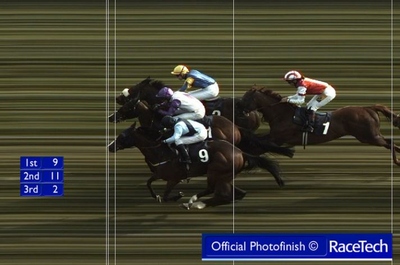 There is no doubt that for the majority of punters the most thrilling aspect of a horse race is the finish. This is, after all, the point at which the outcome of your bet will be determined – will all that painstaking research/picking your favourite name pay off, or will it be a case of back to the drawing board? All will be determined in a matter of strides as the runners approach the winning post.
There is no doubt that for the majority of punters the most thrilling aspect of a horse race is the finish. This is, after all, the point at which the outcome of your bet will be determined – will all that painstaking research/picking your favourite name pay off, or will it be a case of back to the drawing board? All will be determined in a matter of strides as the runners approach the winning post.
This exciting culmination to an equine event comes in many varieties. From the Frankel style 2000 Guineas romps, where even your squinting Aunt Doris can call the winner from her armchair, to those finishes which are considerably closer. So close in fact that it is often nigh on impossible to tell which of the competitors has won – no matter how many angles you inspect the TV screen from.
This is a scenario which leaves backers and connections of those involved in the finish teetering somewhere between triumph and despair. That’s no place to be, and it’s a situation which must be remedied. But if we can’t determine the winner by the naked eye alone, then how do we do it? That’s where the photo finish comes in.
The Photo Finish

Initially the method of determining a winner in those wafer-thin finishes involved three hawk-eyed stewards who positioned themselves on the finish line, with the result of the race then being put to a vote between the three. A less than high-tech solution, dogged by controversy, and one which has thankfully long since fallen by the wayside.
It was in 1890 that John Charles Hemment first put forward the notion that an actual photograph of the runners as they crossed the line might be more reliable than three squabbling officials, and it was an idea which soon took off. Hemment’s initial system involved a thin string being spread across the winning line which, when broken, would trigger the shutter of the nearby camera, with the resulting print then being used to determine the winner. Not exactly hi-tech by today’s standards but certainly an improvement on three fellas arguing the toss.
Innovative as it was, relatively speaking, Hemment’s method was still restricted by the technology of the time. Of course, we have come a long, long way since then and as photographic methods have advanced, so too has the accuracy of the photo finish. These days a system going by the name of Scan-O-Vision is used at the majority of British racetracks, and is able to create incredibly accurate images.
Rather than taking a wide angle shot of the track as the runners pass the post, Scan-O-Vision works by repeatedly (up to 2000 times per second) taking very narrow digital photographs of the winning line. And when we say narrow, we mean narrow, with these images often being only one pixel wide. These strips are then pieced together side by side to create an image of the runners as they cross the line.
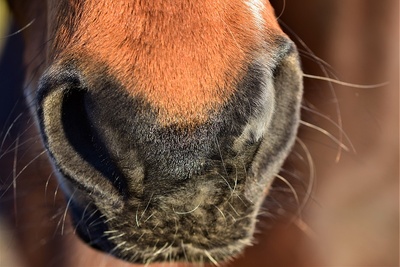 This strip method is the reason the appearance of a photo finish print differs so markedly from a conventional photograph, as rather than representing a larger area at a single moment in time, it displays a very narrow area as it appeared over a period of time.
This strip method is the reason the appearance of a photo finish print differs so markedly from a conventional photograph, as rather than representing a larger area at a single moment in time, it displays a very narrow area as it appeared over a period of time.
The modern set up involves the use of two Scan-O-Vision cameras, both of which are positioned in the photo finish booth high up in the stand. The first of these cameras is focussed upon the winning line itself, with the second being centred upon a strip of mirror attached to the winning post, in order to show the finish as it appeared from the opposite side of the track. The resulting images are then used by the stewards to determine the winner, with the tip of the horse’s nose being the all-important point of measure.
All of this new technology and being able to look at a finish down to the fine detail of a pixel does of course make the task of determining a winner that much easier – and much more accurate – than in years gone by, but on occasion it still isn’t enough to separate the contenders. Sometimes runners really do pass the post at the exact same moment in time. Or at least, as close to that as current technology allows us to determine. And what then?
Dead Heat

In those relatively rare races where a single winner can’t be determined we have what is called a dead heat. Most commonly this will see two winners declared, with the DH abbreviation next to the result, but it is of course possible – although exceedingly rare – for three or more runners to share first place. There are tales of quadruple dead heats from back in the 1850s, but that was long before the days of Scan-O-Vision. So, what happens in the event of a dead heat? How is prize money shared? And most importantly of all, how are bets settled?
Turning first to the question of prize money. This is dished out in what would seem to be the most logical manner, with two dead heat winners sharing first and second place prize money between them. So, for example, in a race which offered £1,000 to the winner and £500 to the second placed finisher, the two dead heat winners would receive £750 each. Fairly straightforward when it comes to prize money then, but what about those bets?
How are Dead Heat Bets Settled?
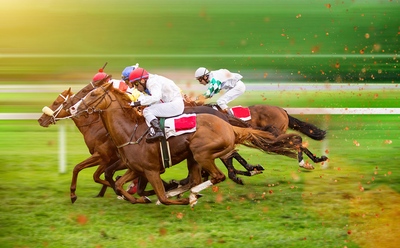 Whilst it would be nice if our friends the bookmakers were to simply pay out as normal on all participants involved in a dead heat, unfortunately it doesn’t quite work like that. And in fairness to the bookies, they do frame their markets around paying out on only one of the competitors winning the race. A process is therefore needed to bring dead heat pay-outs more into line with those of a standard result.
Whilst it would be nice if our friends the bookmakers were to simply pay out as normal on all participants involved in a dead heat, unfortunately it doesn’t quite work like that. And in fairness to the bookies, they do frame their markets around paying out on only one of the competitors winning the race. A process is therefore needed to bring dead heat pay-outs more into line with those of a standard result.
This process is labelled as “dead heat rules” in the bookmakers’ terms and conditions and it works as follows. In settling a dead heat bet the bookmaker will divide the punter’s stake by the number of competitors involved in the dead heat and then pay this reduced stake out at the full odds taken. For example, consider a £10 win bet at odds of 5/1 on a runner who then finishes in a dead heat with one other horse. The bookmaker will divide the £10 stake by two and then pay this out at the full 5/1 odds, creating total returns of £30. Effectively the punter’s horse “half won”, with the other horse also “half winning” and the bets are paid accordingly.
In the highly unusual instance that three horses were involved in the dead heat, the £10 stake would be divided by three, with the resulting £3.33 staked then being paid out at 5/1 odds for total returns of £20 (including £3.33 stake back and £6.67 stake lost).
Many punters complain about this dead heat rule, but really it is much the same as the way in which the prize money is paid out to winning connections. With the owners of a dead heat finisher receiving half of the first place prize money and half of the second place winnings, it follows that the horse is deemed to have half won the race and half finished second. Relating this to a straight win bet on said animal, it seems reasonable to suggest that only half of the bet is actually a winner, with the other half effectively being placed on a second placed loser, and thus returning zero.
Each Way Dead Heats
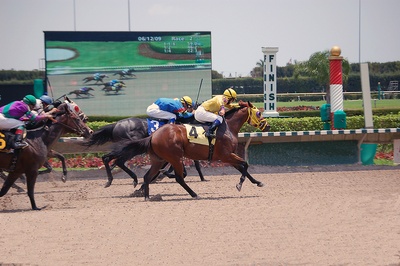 Of course, dead heats aren’t restricted to the battle for first place, they also crop up in the each way positions too. Each way pay-outs are covered by the same dead heat terms and conditions but, whilst being rooted in the same logic, are a little more complicated than those which apply to the win side of a bet.
Of course, dead heats aren’t restricted to the battle for first place, they also crop up in the each way positions too. Each way pay-outs are covered by the same dead heat terms and conditions but, whilst being rooted in the same logic, are a little more complicated than those which apply to the win side of a bet.
Sometimes for example a dead heat may make no difference whatsoever to your each way return. Consider for example an each way bet in a race which pays out ¼ odds on the first three finishers. Should your runner finish in a dead heat for second with one other horse your bet will be paid out as normal.
The reason for this is that that your selection has in essence half finished second and half finished third, both of which positions meet the each way payout criteria for the race. A £5 each way bet at odds of 12/1 in this situation would therefore generate total returns of £20 as normal. The £5 win side of the bet being lost, with the £5 place portion paid out at ¼ of 12/1 which is 3/1.
However, if we are to tweak the above example only slightly, in that rather than finishing in a two-way dead heat for second, your selection instead finished in a dead heat for third, this would in fact result in a decreased pay-out. In this scenario your selection has effectively half finished third (entitled to an each way pay out under the ¼ odds first three finishers criteria) and half finished fourth (not entitled to a pay out under the stated each way terms).
In this instance the each way portion of your stake would therefore be halved when calculating the returns. Using the same £5 each way stake and 12/1 odds as above, the returns generated would now be only £10. The £5 win part of the bet again being lost, with the £5 place portion then being halved, and the resulting £2.50 paid out at ¼ of 12/1 which is 3/1.
If this again all seems a little unfair and you are unhappy with the returns paid by your bookie, we should also point out that dead heat rules are applied equally across all betting sites. This is not something that varies from one bookmaker to the next and, equally, dead heat rules work in just the same way in golf and other sports as they do in racing.
Why Dead Heat?
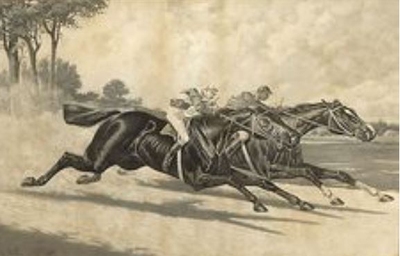 As said, the term dead heat and the use of these rules certainly isn’t restricted to horse racing, cropping up in athletics, swimming and being particularly commonplace in scoring sports such as golf.
As said, the term dead heat and the use of these rules certainly isn’t restricted to horse racing, cropping up in athletics, swimming and being particularly commonplace in scoring sports such as golf.
As with many commonplace idioms (such as across the board, front runner and hands down) it is, however, in the sport of kings that the phrase first originated.
In the earliest days of competitive horseracing, one of the most common forms of competition was for the same two horses to race against one another in a number of “heats”, often over the course of the same day. Whichever horse won the most of these heats would then be declared the winner.
And just as there are now, back then there were those occasions when the runners crossed the line almost as one, and a winner could not easily be determined.
In the absence of photo finishes, such heats were simply declared dead in that they could not be counted in determining the final winner, and so the phrase “dead heat” was born.
Dead Heats: Just How Common Are They?
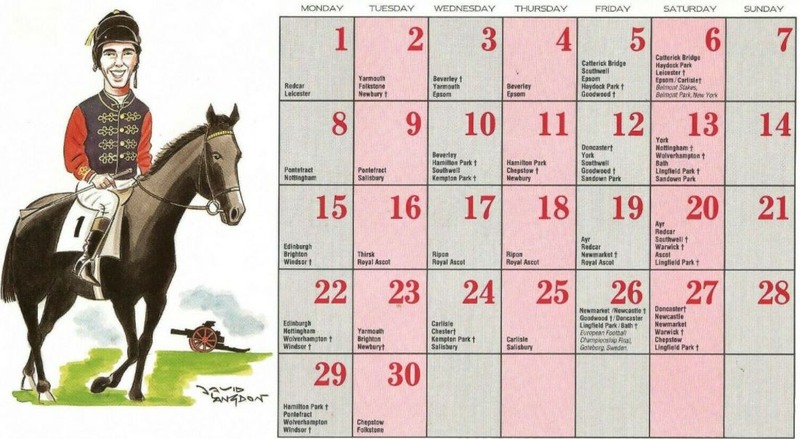
Given the size of the animals in question, common sense dictates that it would be rather unusual for two horses to be inseparable by even a mere pixel at the end of a race. And it does turn out that dead heats in horse racing are pretty rare events, although perhaps not quite so rare as you might imagine.
There have in fact been 23 dead heats in major global events since the turn of the century, including a pair of triple dead heats over in the US.
Looking at a larger sample size, an analysis of all results from British and Irish Racing between the years of 2006 and 2016 showed 230 dead heats from a total of 132,287 races.
Definitely an infrequent occurrence then, but that still equates to 23 per year, meaning that, on average, we can expect to see a dead heat once every two to three weeks. Pays to understand the rules then, doesn’t it?
